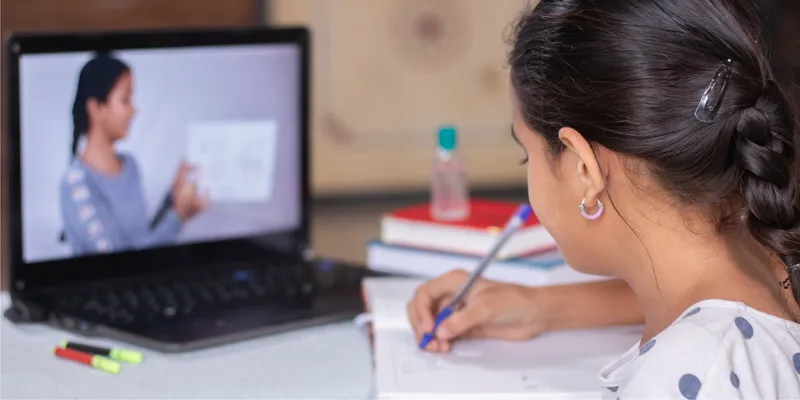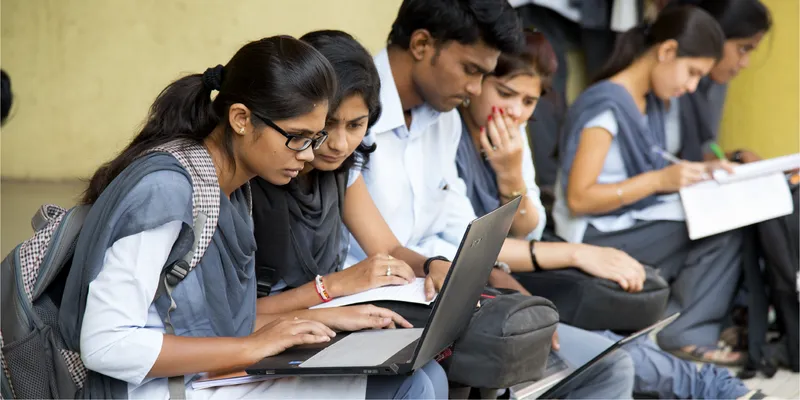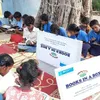Is the hybrid model of education here to stay?
From blended learning, customised curricula, and the larger impact on mental health, Social Story spoke to students, teachers, and parents on how they have adapted to this emerging model, and what lies ahead.
Every morning, since the outbreak of the coronavirus, Khushi Soni, a student of Class 11 at the Shiv Nadar School in Gurugram, has been attending online classes. She is among millions across the country and the world who were forced to shift to online learning almost overnight.
While challenging, she says that the initial days were also exciting as this was a whole new experience. “It was a difficult year for all of us. The online school year had an exciting start. It was something new and seemed futuristic. We enjoyed the comfort of our own room,” she says.
But the novelty soon wore off and she missed the camaraderie with her classmates and the experience of interacting in person with her teachers. With no certainty about when public spaces will reopen on a more permanent basis, we have seen the emergence of a new model — hybrid.
Hybrid workspaces are already becoming the norm across the globe and it looks like “hybrid learning” is gaining popularity as well.
“It is not unreasonable to assume that the future of education could involve a mixed, blended, and ‘hybrid’ model in order to most efficiently cope with the changing times,” says Shashi Banerjee, Director of Education, Shiv Nadar School.

Under the hybrid model, a student's progress is monitored through practice tests and extra assignments, and teachers have been made to actively supporting them and their parents throughout this transition
Hybrid education is a combination of in-person or offline learning and virtual or online learning methods. In this model, online resources replace certain portions of the syllabus that would otherwise have been taught in the classroom.
“It is, therefore, important to make sure that there is no clash or conflict in the operation of the two separate models as they both form parts of a whole,” adds Shashi.
A mixed bag
The hybrid model, while still in its early days of implementation, has proved to have several benefits, the biggest of which is flexibility. Without the constraints of a single classroom, there is significant potential to rethink how a course is taught, how students access study material, and interact with instructors and other learners.
“It also creates the possibility of holding classes with mixed groups, providing a personalised teaching-learning experience for both students and the teachers,” says Shashi.
The hybrid model will also allow students to approach assignments more creatively — using online presentations, assignments, video snippets, projects, and virtual quizzes, etc. Instructors will also be able to formulate newer methods of evaluation that suit both the subject and the students’ strengths.
Students can also design their own learning pathways based on their own curiosity. “An example is the STEAM programme where students have been given more freedom to explore, and the NEP's move towards a more flexible assessment model means that students can choose to focus their energies on learning about things that truly interest them,” says Shashi.
These initiatives will enable further development of students who are empathetic, can think for themselves, and take calculated risks, which are the aims of the NEP.
“Through the online and hybrid mode of learning, I feel my child has learnt to become more serious about her classes and subjects. She understands that she has to make the best of the limited exposure they have to their teachers. Students want to set and create their own momentum. I am happy that her school played an active role by using tech platforms like Nearpod to creatively engage students to go beyond the syllabus,” says Nivedita Mishra, a parent of a senior school student at the Shiv Nadar School.
She says that her daughter’s progress is monitored through practice tests and extra assignments, and teachers have been made actively supporting students and parents throughout this transition.
However, there will be a steep learning curve as both students and teachers adapt to the new model. “Both teachers and the students have to adapt and adjust to this blending of two very different modes of learning, which can be very complex and instead of speeding up the process, might actually derail it temporarily. Over the last year-and-half, schools have ironed out the issues with virtual learning and students have also started adjusting to this mode of education. What helped make the model a success is a greater level of cooperation and collaboration between students, parents, and teachers,” says Shashi, who feels that ‘technology, unless used well, can be as tyrannical a regime as the chalk-board power system’.
She feels the best way to address this is by encouraging student leadership through the development of student voice and choice in learning programmes, as well as in the design of lessons.
Isolation and belonging
Among the main challenges to adapting to the hybrid model will be ensuring equal engagement and collaboration. With half the students studying online and the other half are studying in the classroom, coordination can be difficult.
“For a teacher, involving each student in a discussion is important and ensuring that the lesson has been understood in detail and everyone’s doubts have been cleared is a must. Therefore, creating opportunities such as group discussions, debates, and presentations can work as a solution,” says Shashi.

The hybrid model can result in some students feeling more isolated while their peers who choose to go to school interact in person. However, there are those who have come to prefer online education
For the students, there is an added layer to consider. “There were days I felt distracted with the thought of some of my friends having fun in school while I was stuck at home. Focusing during online classes is hard sometimes, but with friends I haven't met for long in school made it more difficult for me,” says Samarth Agarwal, a Class 11 student at the Shiv Nadar School.
He adds that the lockdown has been a mixed bag because the chance to be at home also allowed him to spend more time with himself and take a ‘break from the outside world’. While limited social interaction has been a challenge in terms of collaboration and teamwork, students have been using technology for regular virtual interactions as well to have more shared experiences.
“I started to write and send my drafts to friends who gave their feedback, which made me happy. Teachers were also understanding and did not burden us with homework. They were always there to listen to us and paid attention to each of us during online classes without making anyone else feel left out,” says Samarth.
Khushi says students were allowed to choose platforms they were comfortable with. “Coming to school to clear our doubts and meet our friends impacted us positively. As we moved back to online classes, we started creative clubs to explore our passions together. While we would love to go back to school, we also understand the efforts made by our teachers to cope with these changing times.”
Impact on mental health
With so many changes happening almost overnight, students, teachers, and parents have had to struggle to adapt. In addition to the steep learning curve, many educators who are not tech-savvy were forced not only to learn a new method of education remotely but also to keep students engaged.
“The constantly evolving environment is at times a source of stress both for students and teachers. While it may have been fun when it began, that soon gave way to finding ways to sustain motivation and focus. Finding the privacy and personal space to attend classes, constant supervision, and entry of parents into their academic world has not been easy on many of them,” says Shashi.
She feels that students can be supported by creating and facilitating opportunities for free and open conversations amongst each other as they would have in the physical school space. “Parents should also be supported with ways to manage the pandemic and parenting, strategies to increase the emotional and physical regulation, and with managing their own stress. This will indirectly lead to students having more positive interactions within the home.”
It is important to normalise conversations around mental health. “The skills needed to work on positive mental health — understanding of self and managing stress — are as important as academic skills. We must create a safe environment to help everyone talk about their emotions, feelings, and fears comfortably. Having counsellors in the school to take care of students and teachers is essential in today’s day and time,” says Shashi.
A holistic is important given that it is reasonable to assume that the future of education could involve a mixed, blended, and ‘hybrid’ model.
“However, it is too early to say by when the shift will be a permanent feature in our lives. For now, we will have to ensure that COVID protocols and SOPs from the government are followed to ensure the safety of our children,” Shashi signs off.
YourStory’s flagship startup-tech and leadership conference will return virtually for its 13th edition on October 25-30, 2021. Sign up for updates on TechSparks or to express your interest in partnerships and speaker opportunities here.
For more on TechSparks 2021, click here.
Applications are now open for Tech30 2021, a list of 30 most promising tech startups from India. Apply or nominate an early-stage startup to become a Tech30 2021 startup here.
Edited by Saheli Sen Gupta








